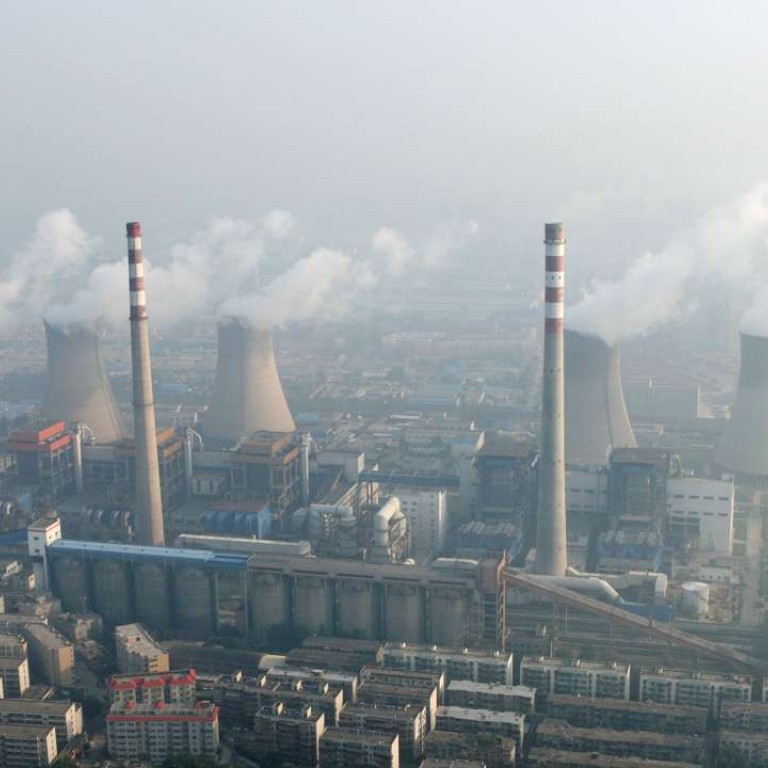
Will China beat its 2030 deadline to stop carbon emissions growth? Mainland researchers think so
Government researchers’ findings come after climate change officials who, faced with a target review in 2018, earlier insisted country still faces many difficulties in curbing greenhouse gases
A senior Chinese climate change negotiator has rejected claims that China’s carbon emissions may already have peaked, but mainland researchers are gradually reaching a consensus that the world’s biggest greenhouse gas emitter may curb emissions faster than the government has already pledged.
Zou Ji, deputy director general of the National Centre for Climate Change Strategy and International Cooperation, made the comments ahead of the annual UN climate summit in Morocco, which started on Monday. It will discuss how to implement the Paris climate agreement.
Zou said China’s flattened coal consumption and a stall in carbon emissions growth was a result of China’s economic slowdown and that emissions could pick up when the contraction ends.
“Even if China’s CO2 emissions in manufacturing drop, the country still faces an uphill battle to curb emissions growth in sectors such as transportation and construction,” he told a group of reporters in Beijing last week.
Two UK-based climate researchers, Fergus Green and Nicholas Stern, estimated in a research paper earlier this year that the peak in China’s carbon emissions may have already occurred in 2014 and it was “quite possible” emissions would “fall modestly from now on”.
A report compiled by the United Nations Environment Programme said nations’ pledges made in the Paris Agreement would see global temperature increase by 2.9 to 3.4 degrees Celsius, failing the target set in the climate deal to limit temperature rises to less than 2 degrees.
How countries ratchet up their emission commitments to close the gap is not likely to take centre stage at the climate talks in Morocco, but Chinese negotiators may feel the pressure in two years’ time when countries will face a review of their existing goals, observers said.
Chinese climate officials still insist in public talks on emphasising the difficulties the country faces to transform and decarbonise its economy.
They also underline how arduous it will be to meet the nation’s commitments in the Paris Agreement and to reach a peak in carbon emissions no later than 2030.

One of the most aggressive scenarios, drawn up by two Beijing-based groups, the Energy Research Institute, Zou’s own centre plus the US-based consultancy Energy Innovation, says a peak in emissions is likely to occur in 2022.
Under this “accelerated low carbon scenario”, coal’s share of primary energy use will fall to 47 per cent in 2030, down from 64 per cent in 2015, and non fossil fuel sources rise to 22 per cent.
Zhou Dadi, a former president of the Energy Research Insititute, affiliated with China’s top economic planning body the National Development Reform Commission, who is also a veteran adviser on climate and energy policies to the central government, said at a meeting last week that China would be able to peak carbon emissions before 2025.
China considered setting 2025 as a deadline for its peak in carbon emissions when pondering its post 2020 climate targets, but the ambitious plan was scaled back to “no later than 2030” at the last minute, according to a source with direct knowledge of the issue.
However, despite all the research, uncertainties abound when it comes to the actual implementation of policy, according to Philip A. Wallach, a senior fellow at the Washington-based think tank the Brookings Institution.
“In China, it is hard to know if regional officials’ will be politically or technically able to implement plans formulated in Beijing,” he wrote in a recent report.
“As with many policy areas in China, the biggest challenge is in seeing through implementation of complex policy directives after they have been formulated in Beijing,” he wrote.
Provincial officials will still be evaluated primarily in terms of whether they deliver economic growth and when reducing emissions is in tension with this goal, it may lose out, he said.

